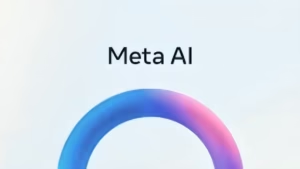Meta AI Unveils Brain2Qwerty: A Deep Learning Model for Translating Brain Activity into Sentences Based on EEG or MEG Data While Users Type Memorized Sentences

Meta AI Launches Brain2Qwerty: A Revolutionary Deep Learning Model
In an exciting new development, Meta AI has introduced Brain2Qwerty, a cutting-edge deep learning model designed to translate brain activity into text. This innovative model allows users to type simple sentences while their brain activity is monitored through Electroencephalography (EEG) or Magnetoencephalography (MEG). Here, we will explore how this model works, its potential applications, and the implications for technology and neuroscience.
Understanding the Technology Behind Brain2Qwerty
What is Brain2Qwerty?
Brain2Qwerty leverages advanced machine learning techniques to decode sentences directly from brain activity. During the study, participants are asked to compose brief, memorized sentences on a QWERTY keyboard while their brain activity is captured using EEG or MEG technologies. EEG detects electrical activity in the brain, while MEG measures the magnetic fields that arise from this electrical activity.
How Does It Work?
The model processes the neural data collected during these typing exercises. Here’s a simplified breakdown of the process:
- Data Collection: Participants type pre-memorized sentences while their brain activity is recorded.
- Feature Extraction: The model analyzes the EEG or MEG data to identify patterns corresponding to the activity associated with each word or letter typed.
- Model Training: Using these patterns, Brain2Qwerty is trained to recognize and predict the text being typed based solely on brain signals.
- Decoding: Once trained, the model can decode and generate sentences from new brain activity data, even if participants are not typing in the conventional sense.
Potential Applications of Brain2Qwerty
The implications of this breakthrough are vast, with numerous potential applications:
Assistive Technology: This technology could greatly benefit individuals with motor impairments, allowing them to communicate more effectively without relying on traditional typing methods.
Cognitive Research: Brain2Qwerty can advance our understanding of brain function and language processing, opening new avenues for cognitive science research.
- Enhanced Human-Computer Interaction: By decoding thought processes, we may develop more intuitive interfaces that allow users to interact with devices using their thoughts, potentially revolutionizing computing.
Safety and Ethical Considerations
While the advancements brought about by Brain2Qwerty are exciting, they also raise important ethical questions:
Privacy Concerns: The ability to decode thoughts could lead to privacy infringements, as it raises the possibility of unauthorized access to individuals’ cognitive information.
Informed Consent: Participants must fully understand the implications of their brain activity being analyzed. Clear guidelines and transparent practices must be in place.
- Misuse of Technology: As with many advancements, there is the potential for misuse. Safeguards should be established to prevent the technology from being exploited for nefarious purposes.
Future Directions in Brain-Computer Interfaces
The introduction of Brain2Qwerty is a significant step forward in the field of brain-computer interfaces (BCIs). Future research may expand upon this model by exploring more complex sentence constructions and real-time decoding. Scientists are also considering how to improve the accuracy and reliability of such models by incorporating larger datasets and diverse participant demographics.
In summary, the Brain2Qwerty model by Meta AI is poised to change the landscape of communication and cognitive research. By enabling the translation of brain activity into text, it opens new doors for individuals with disabilities, enhances technological interactions, and pushes the boundaries of what we know about the brain.






